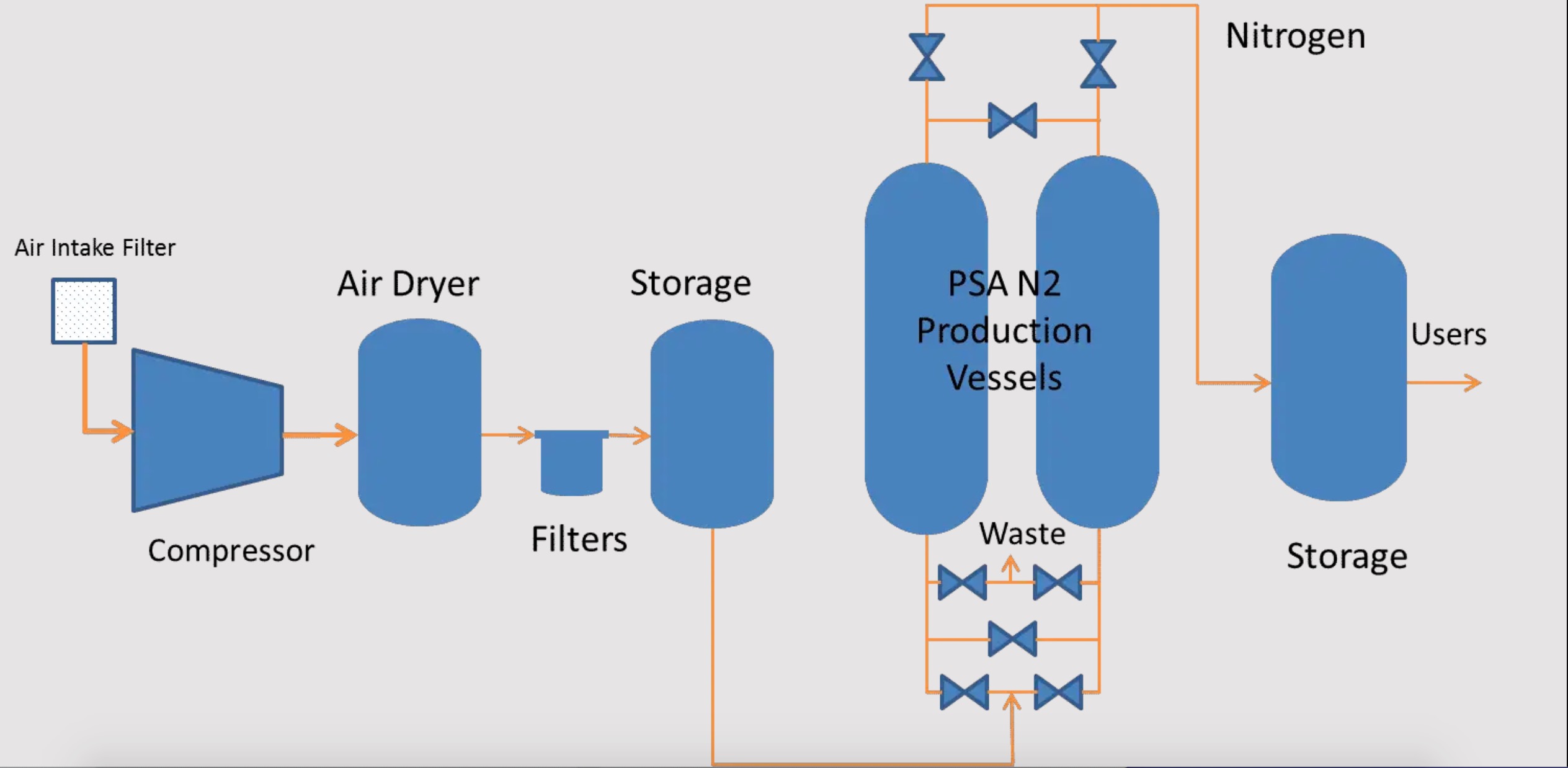Carbon molecular sieve and activated carbon in PSA Nitrogen Generator?
2023-10-06
Nitrogen gas must be familiar to everyone, right? So how do you get more nitrogen? This will require our nitrogen generator.
When it comes to PSA Nitrogen Generators, the utilization of carbon molecular sieve and activated carbon is instrumental in separating nitrogen gas from the air to produce high-purity nitrogen. By understanding their respective functions, we can paint a comprehensive picture of the overall process.
1.Carbon Molecular Sieve: Carbon molecular sieve (CMS) is a specialized adsorbent material with a unique pore structure made from carbonaceous materials. The construction of CMS imparts it with high selectivity for nitrogen molecules over oxygen molecules. This characteristic makes it an ideal candidate for nitrogen separation.
Working Principle of Carbon Molecular Sieve: In a PSA Nitrogen Generator, the carbon molecular sieve performs the adsorption function during the nitrogen production cycle. The process operates under specific pressure and flow conditions.
When air enters the generator, it is compressed and directed towards a vessel containing the carbon molecular sieve beds. Within these beds, the CMS beads with their highly porous structure selectively adsorb oxygen molecules, allowing the nitrogen molecules to pass through more easily.
Oxygen molecules are larger than nitrogen molecules, and as a result, they are preferentially adsorbed by the carbon molecular sieve. This selective adsorption process leads to the separation of nitrogen from the air mixture, generating a nitrogen-rich stream. The purified nitrogen is collected and directed for storage or utilization in various industries and applications.
As the carbon molecular sieve approaches its adsorption capacity, the system undergoes a pressure swing, shifting from the adsorption phase to the desorption or regeneration phase.
During desorption, the pressure is released, allowing the adsorbed oxygen molecules to desorb and be expelled from the carbon molecular sieve beds. This process regenerates the CMS beds, preparing them for the next adsorption cycle.
2.Activated Carbon: Activated carbon, also known as activated charcoal, is another important component in PSA Nitrogen Generators. It is widely used as a support material for carbon molecular sieve beds.
Working Principle of Activated Carbon: Activated carbon acts as a support structure for the carbon molecular sieve beads, providing mechanical strength and promoting gas distribution within the bed. It helps maintain an optimal flow of air while ensuring efficient contact with the CMS beads.
Activated carbon, with its large surface area and porosity, enhances the adsorption capacity, allowing the carbon molecular sieves to perform at their best. It provides stability to the CMS structure, preventing compression or any adverse effects on the separation efficiency.
Together, the carbon molecular sieve and activated carbon work symbiotically in PSA Nitrogen Generators to efficiently extract nitrogen from the air, yielding a high-purity nitrogen output.
By harnessing the unique adsorption properties of carbon molecular sieve and the supporting capabilities of activated carbon, PSA Nitrogen Generators offer a reliable and cost-effective solution for industries requiring an on-demand supply of nitrogen.
